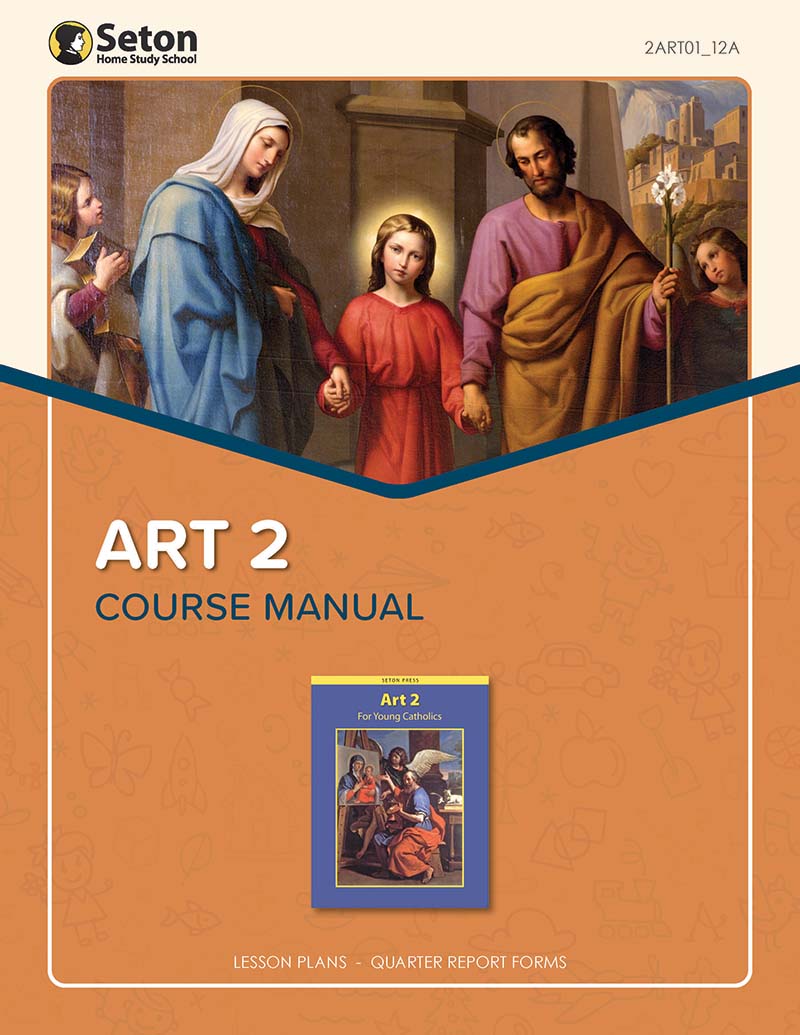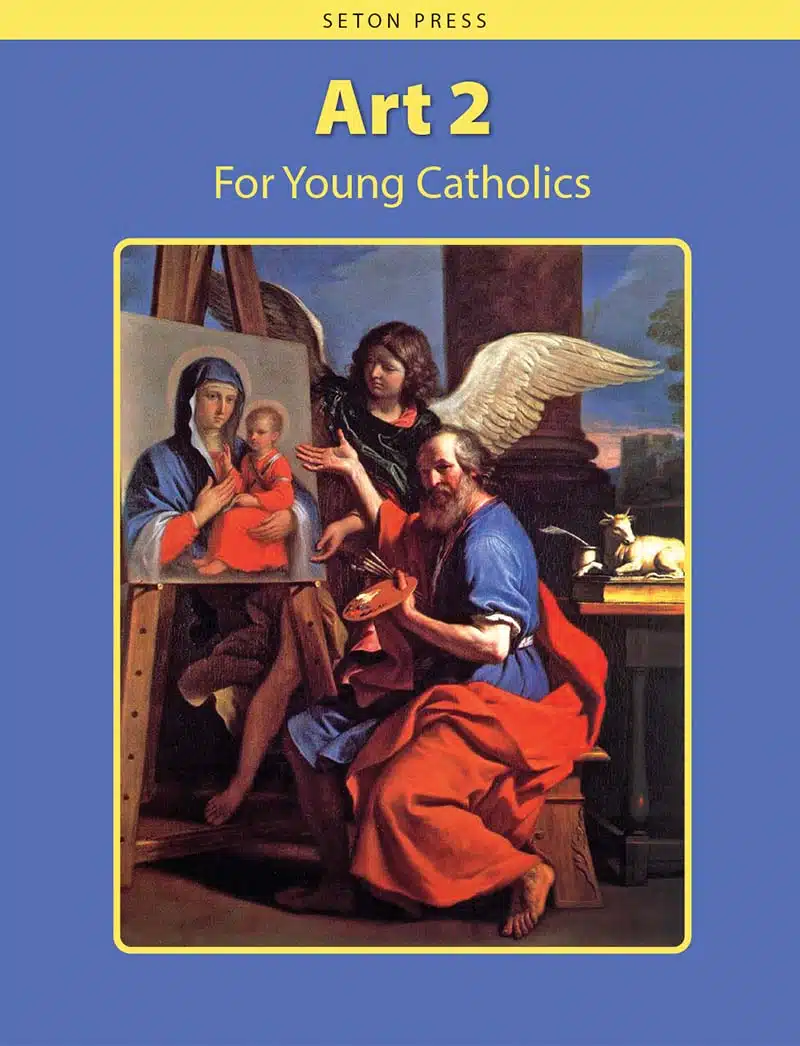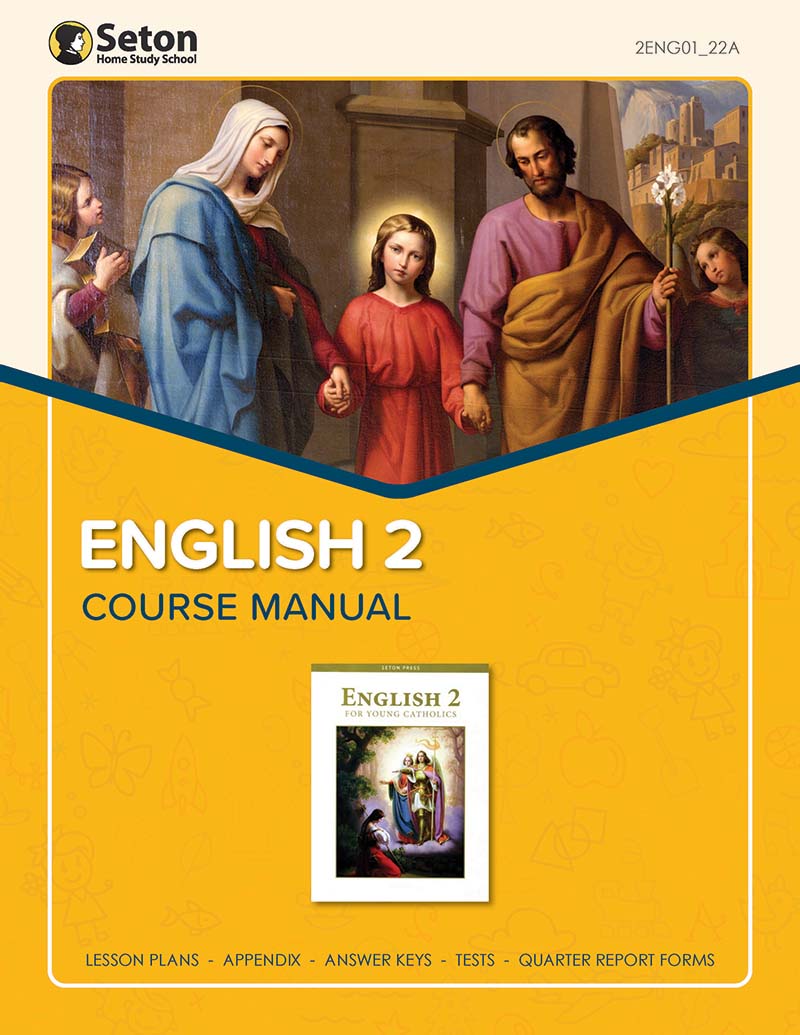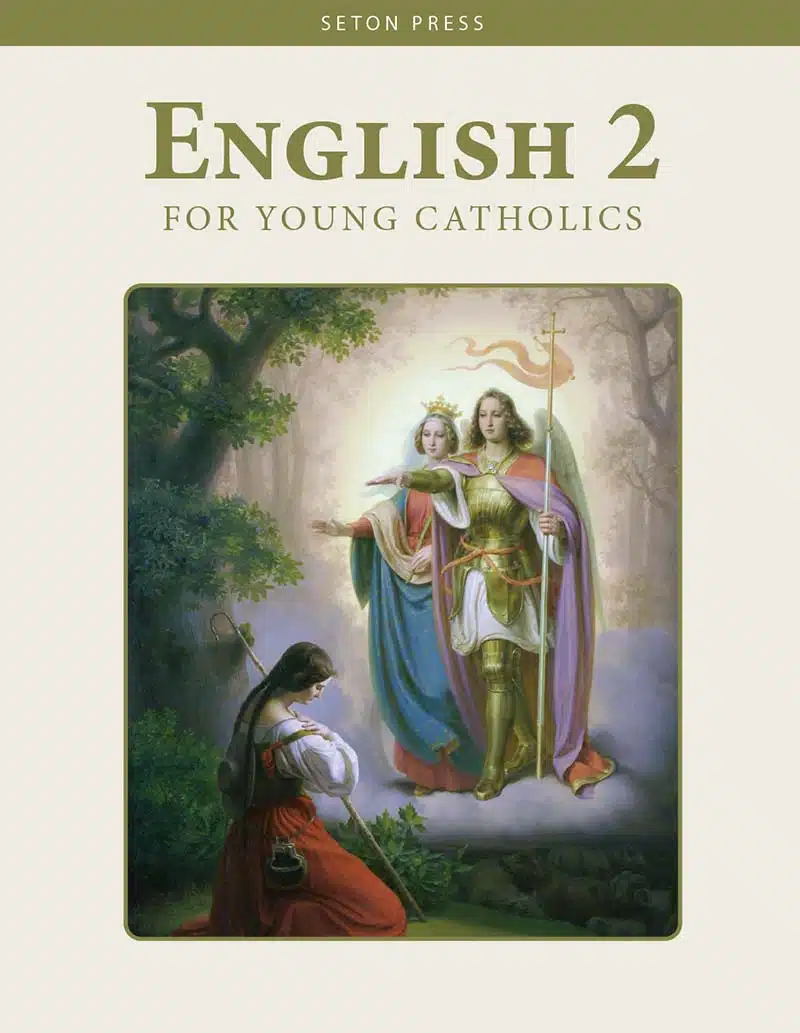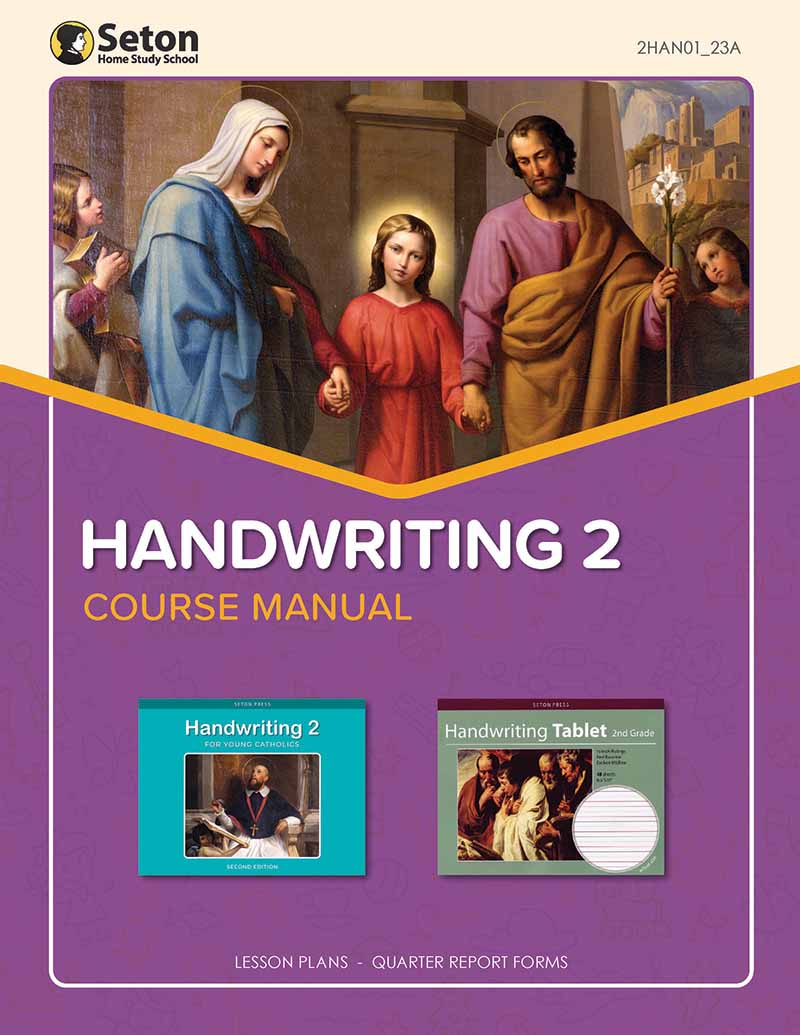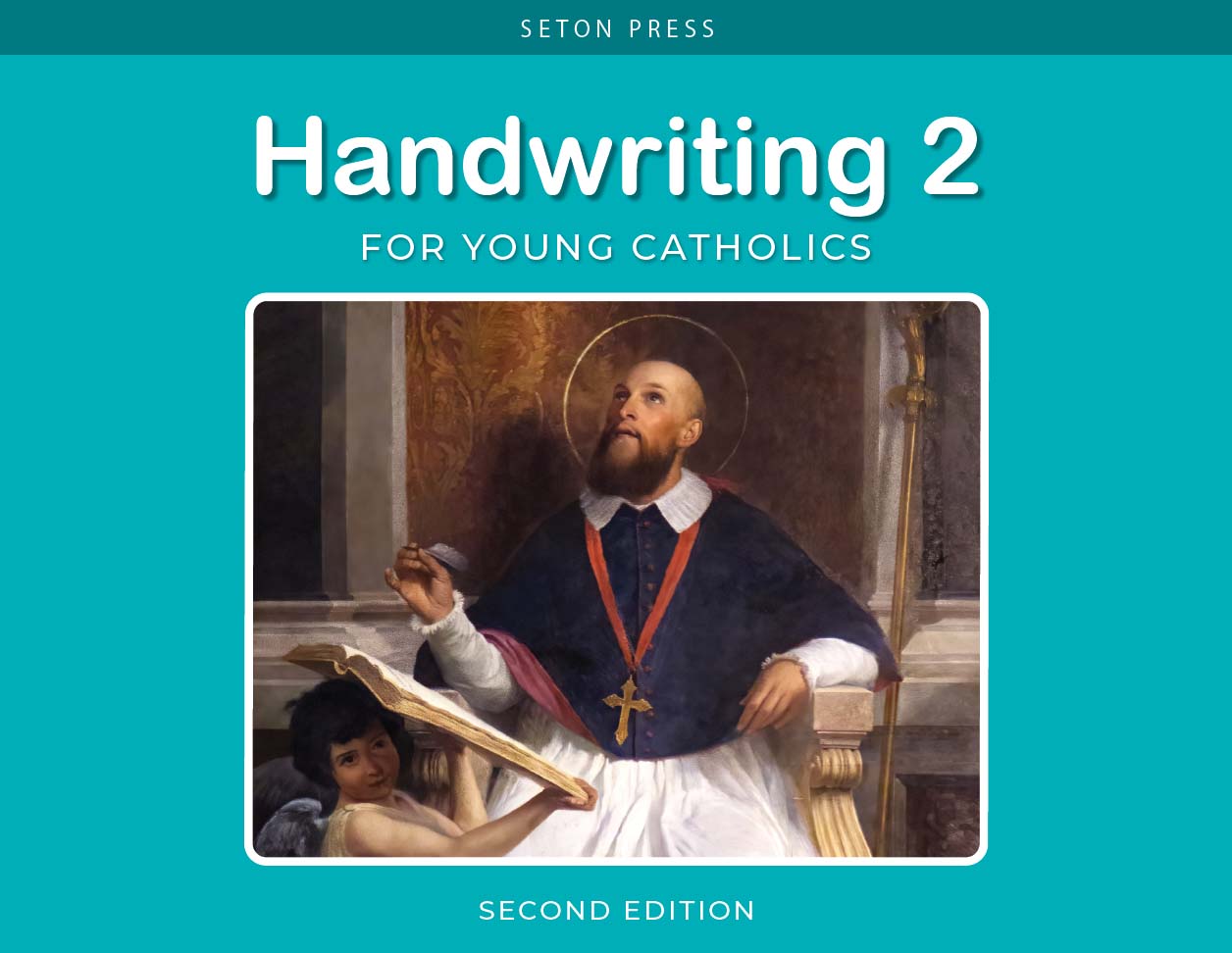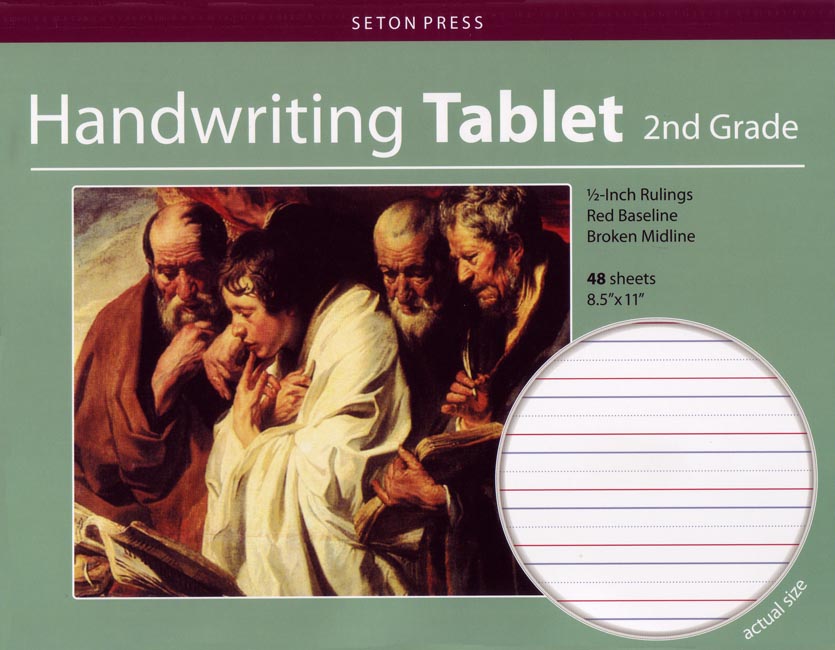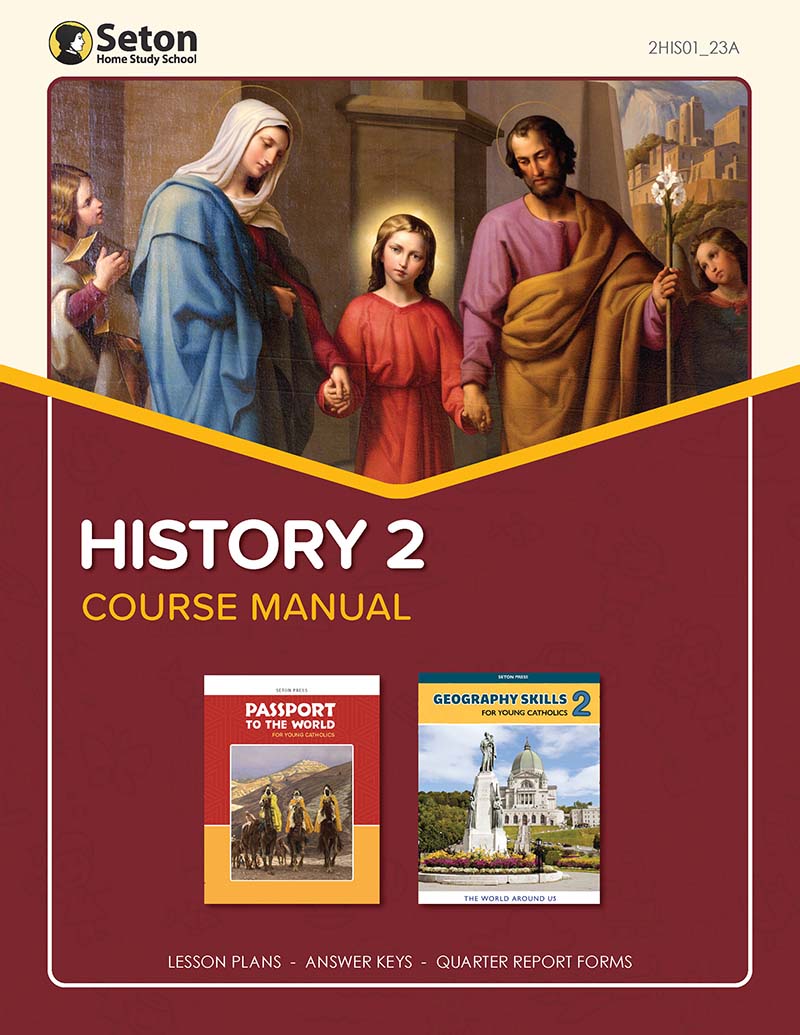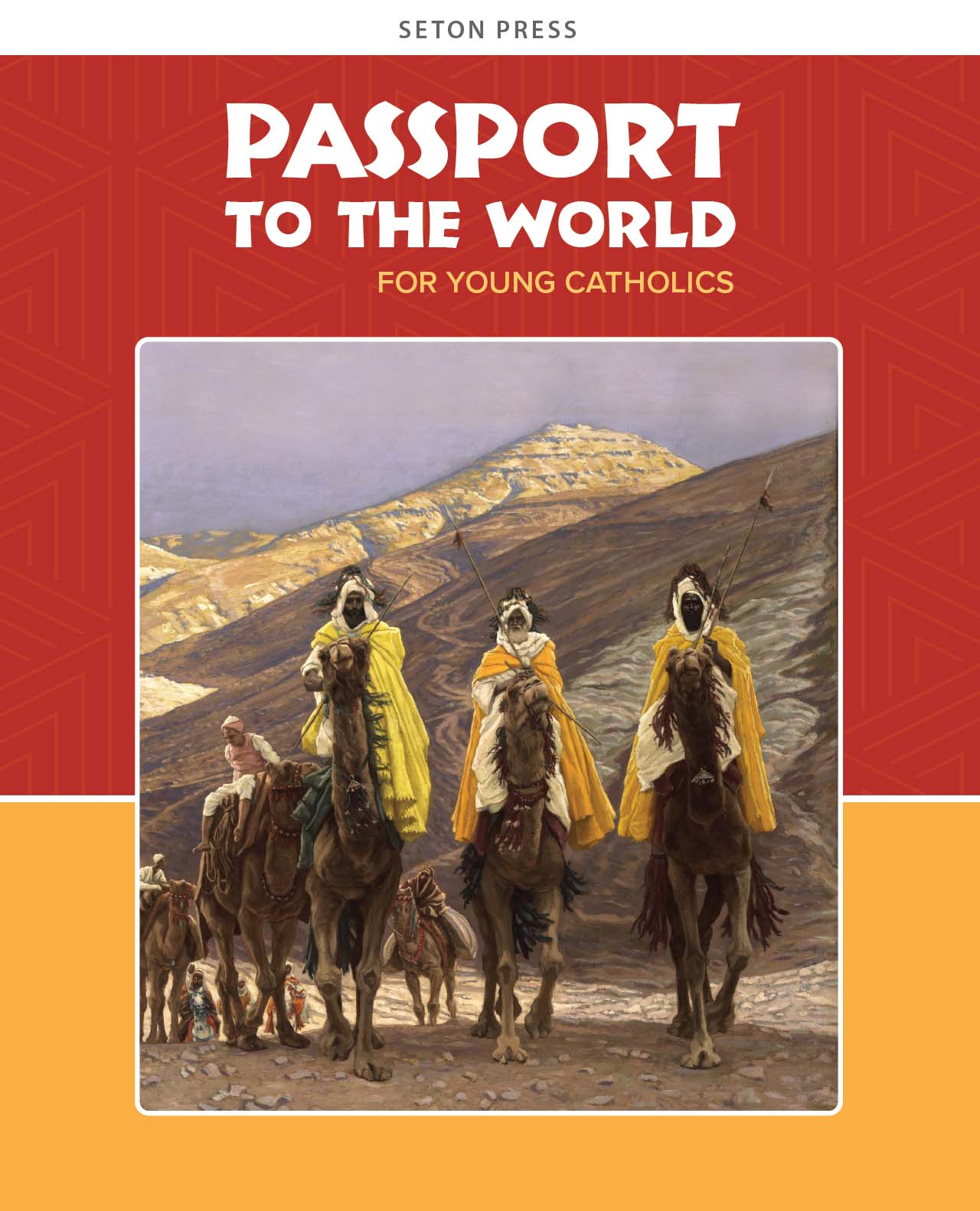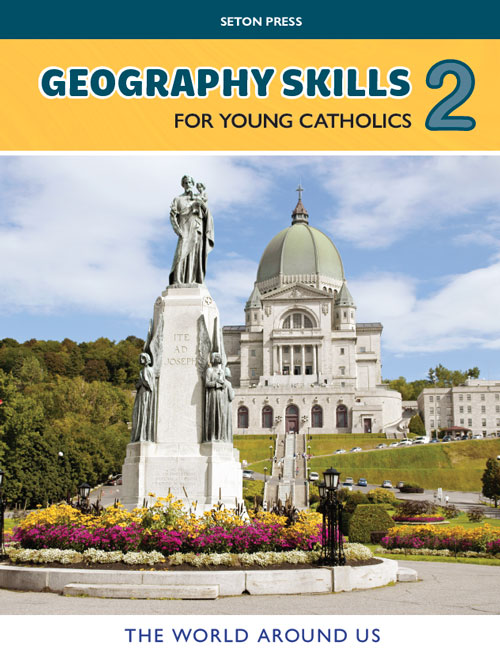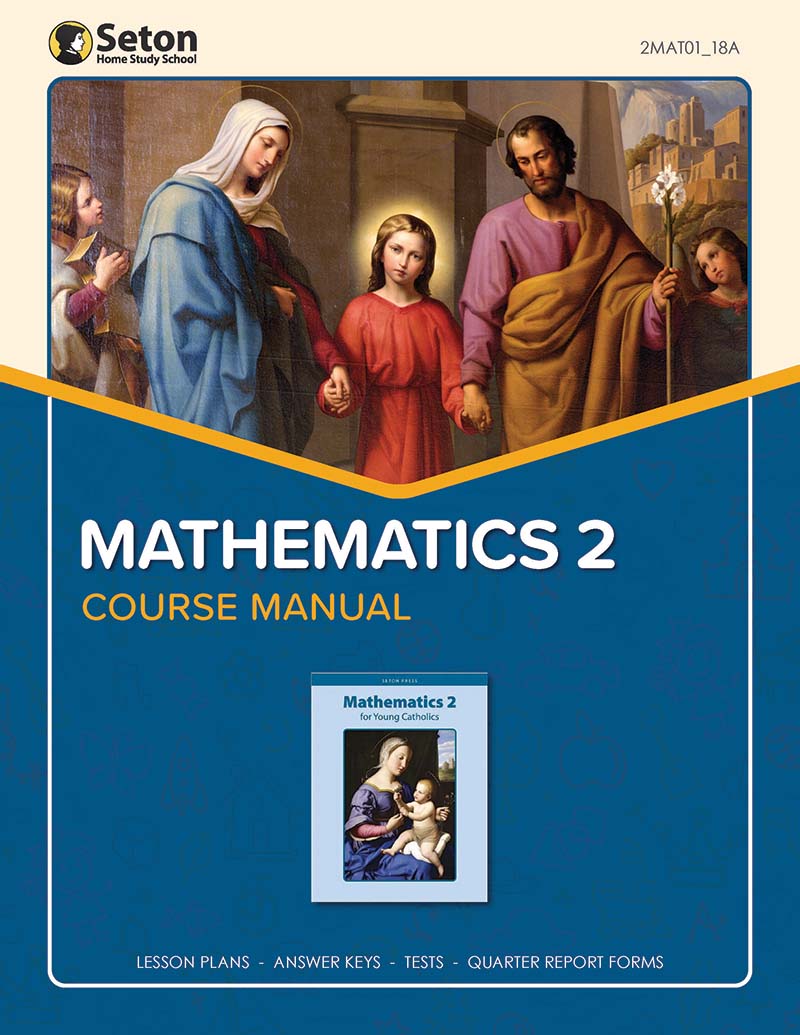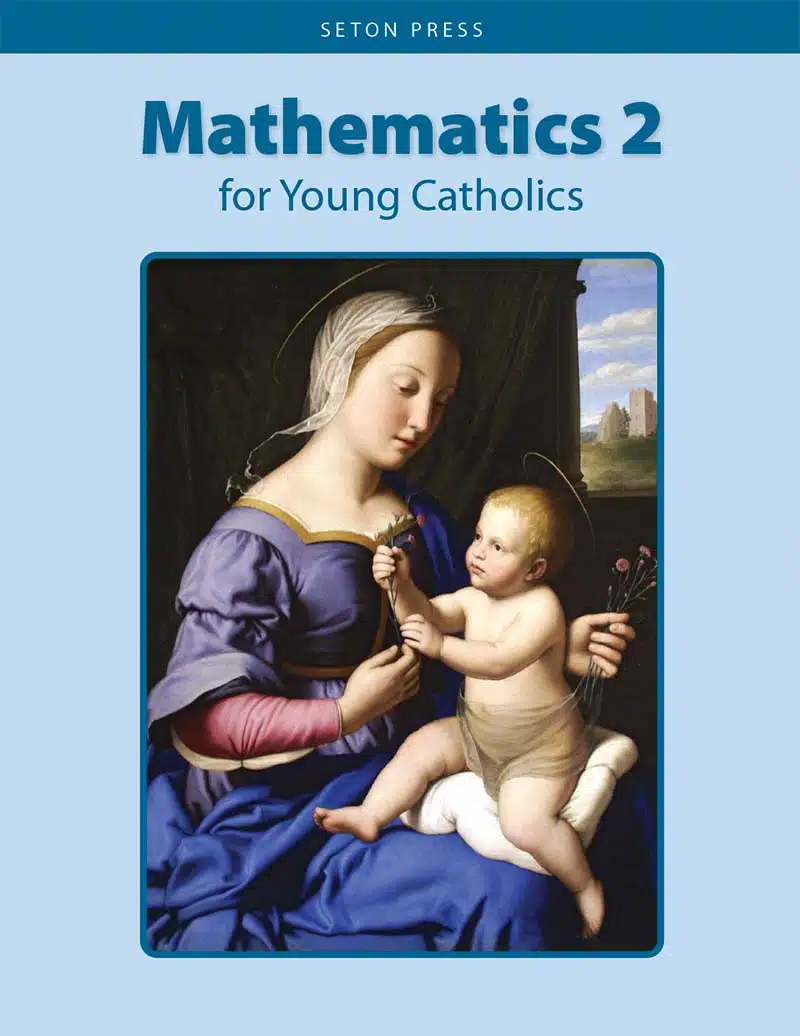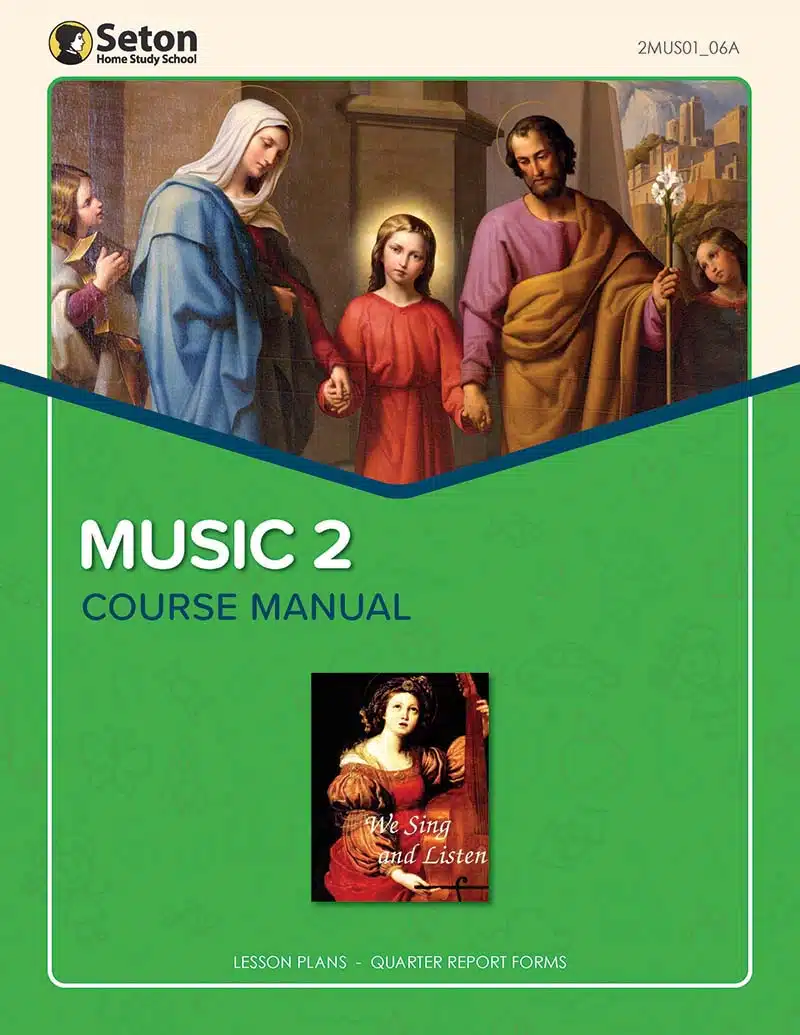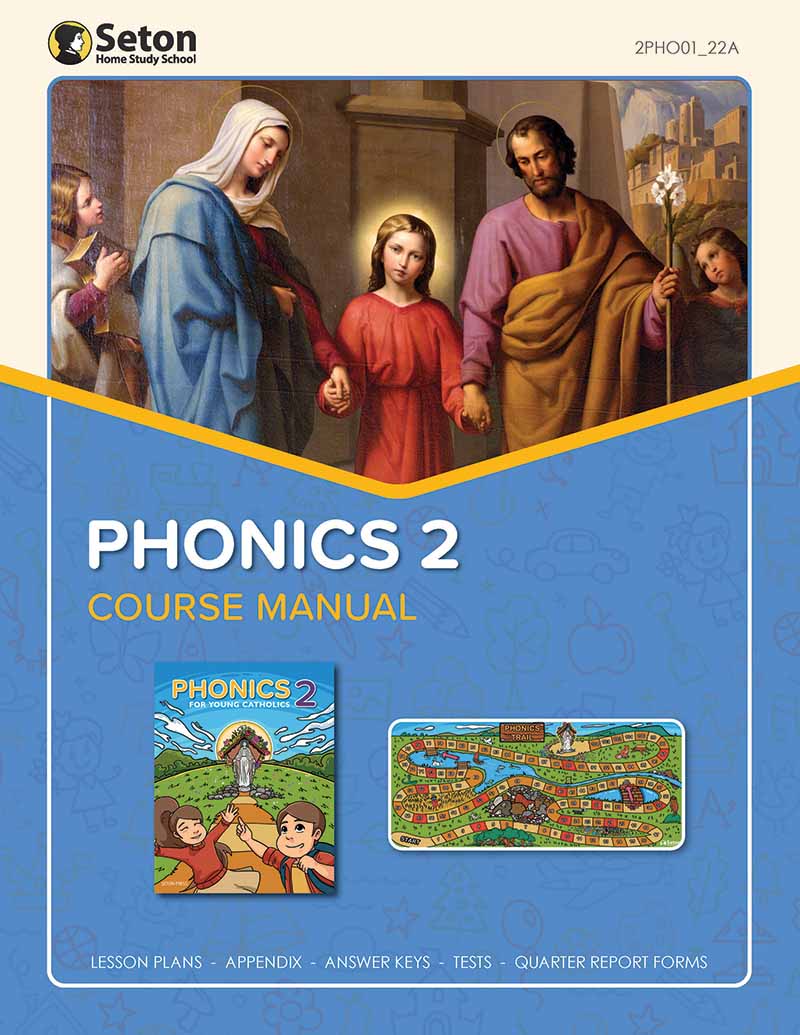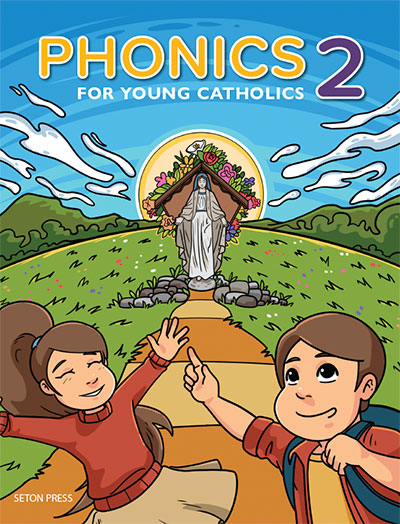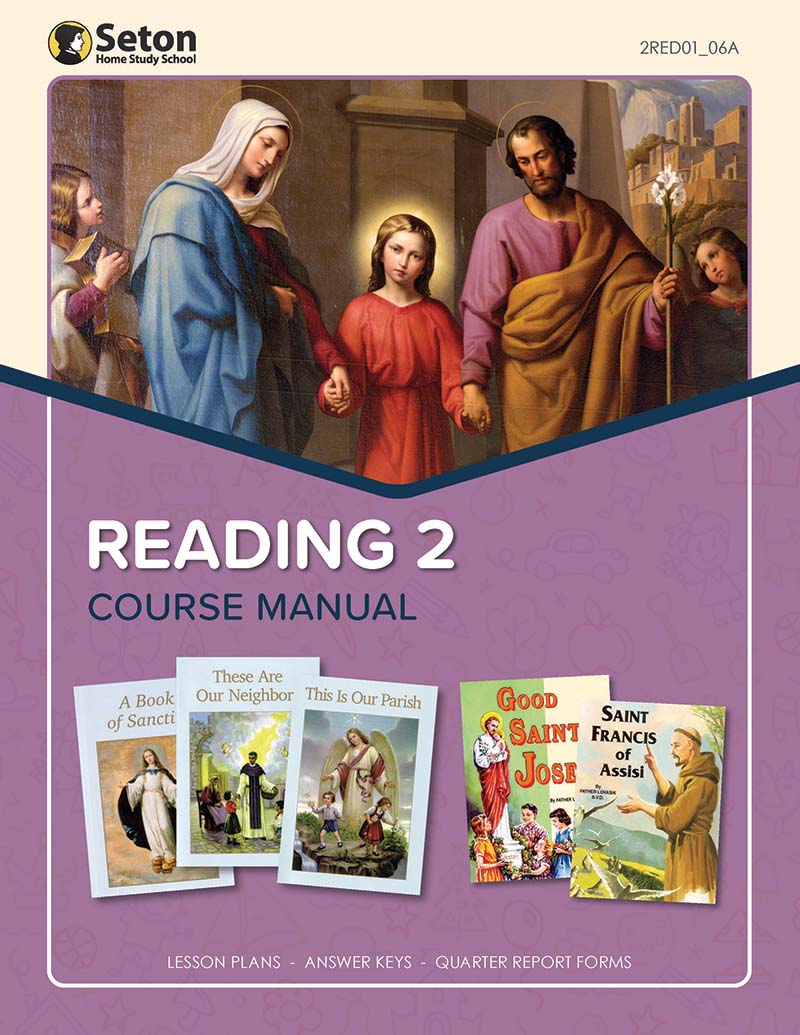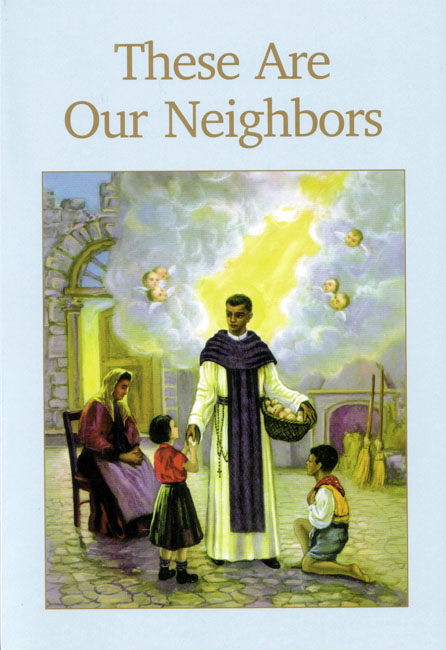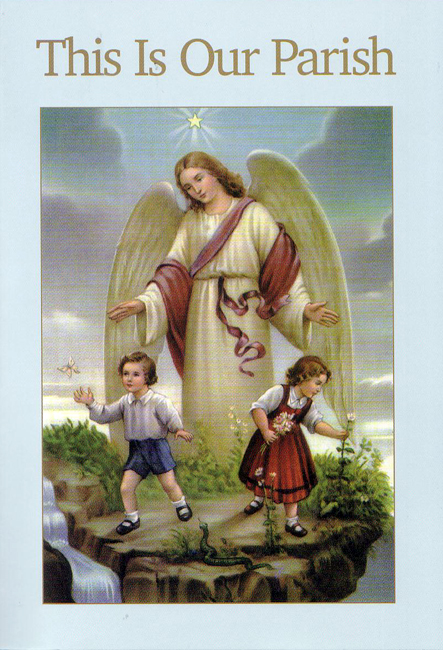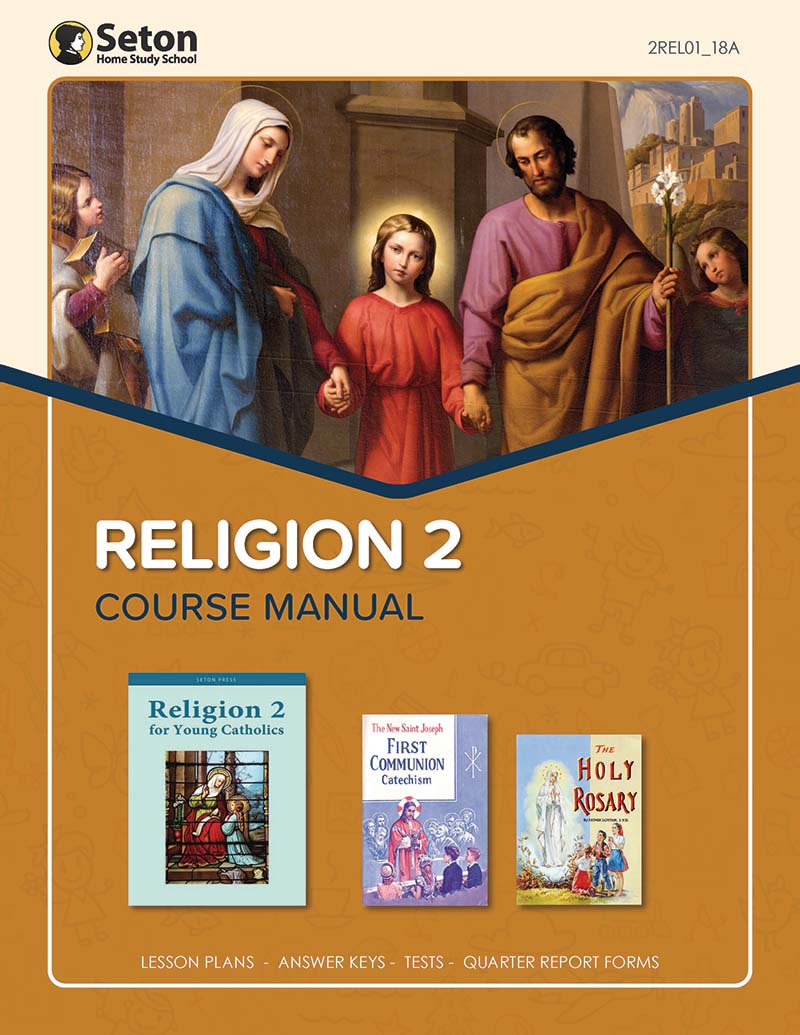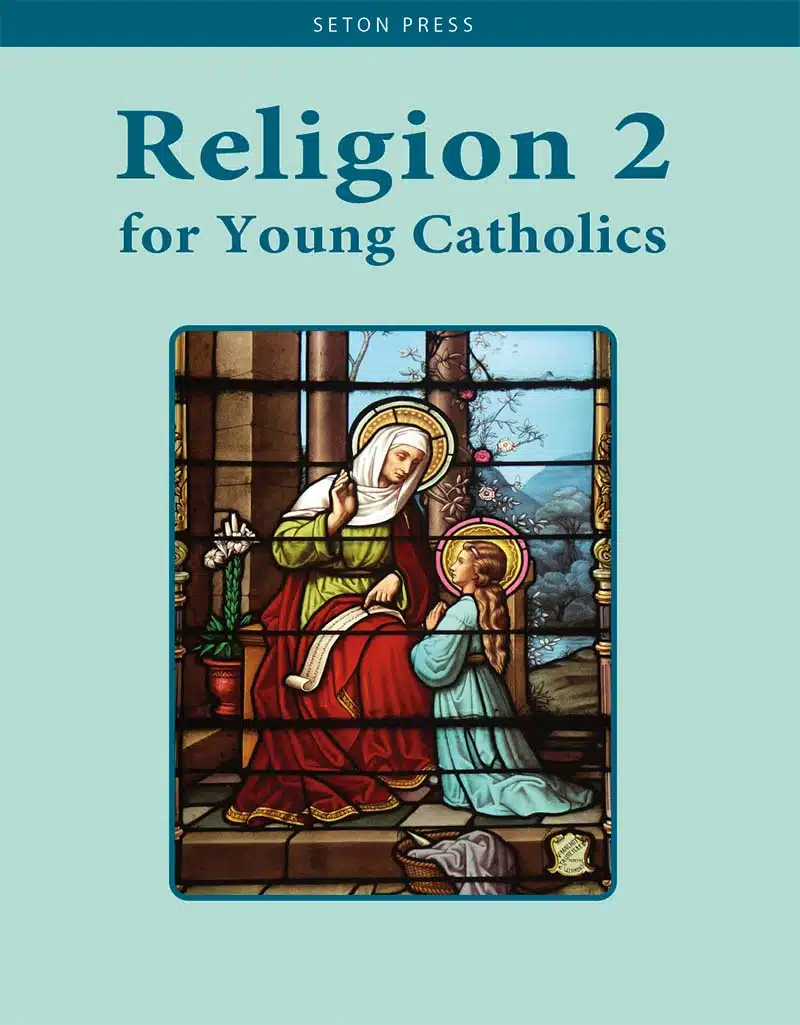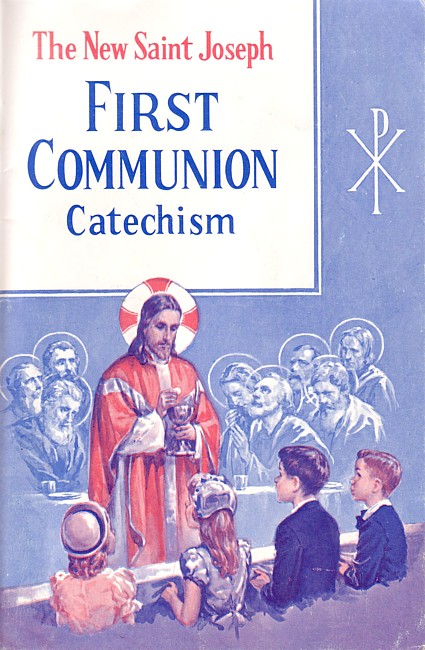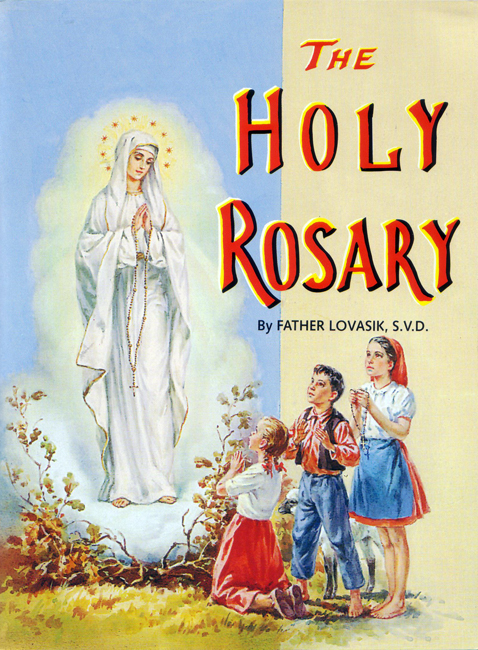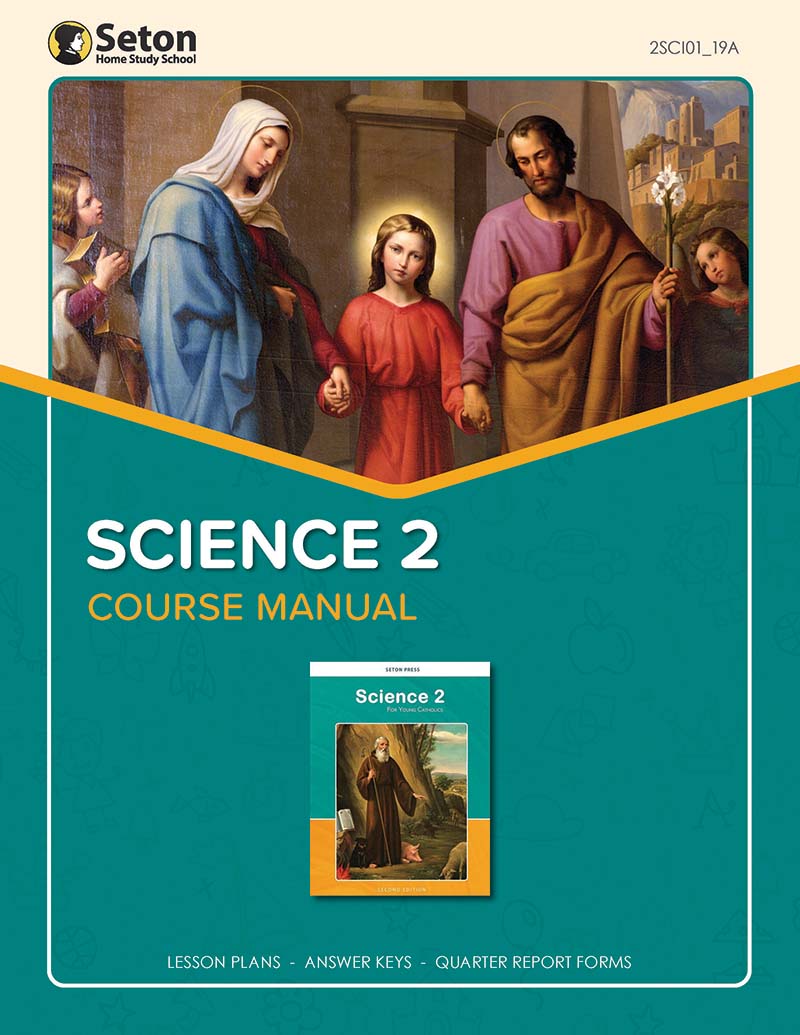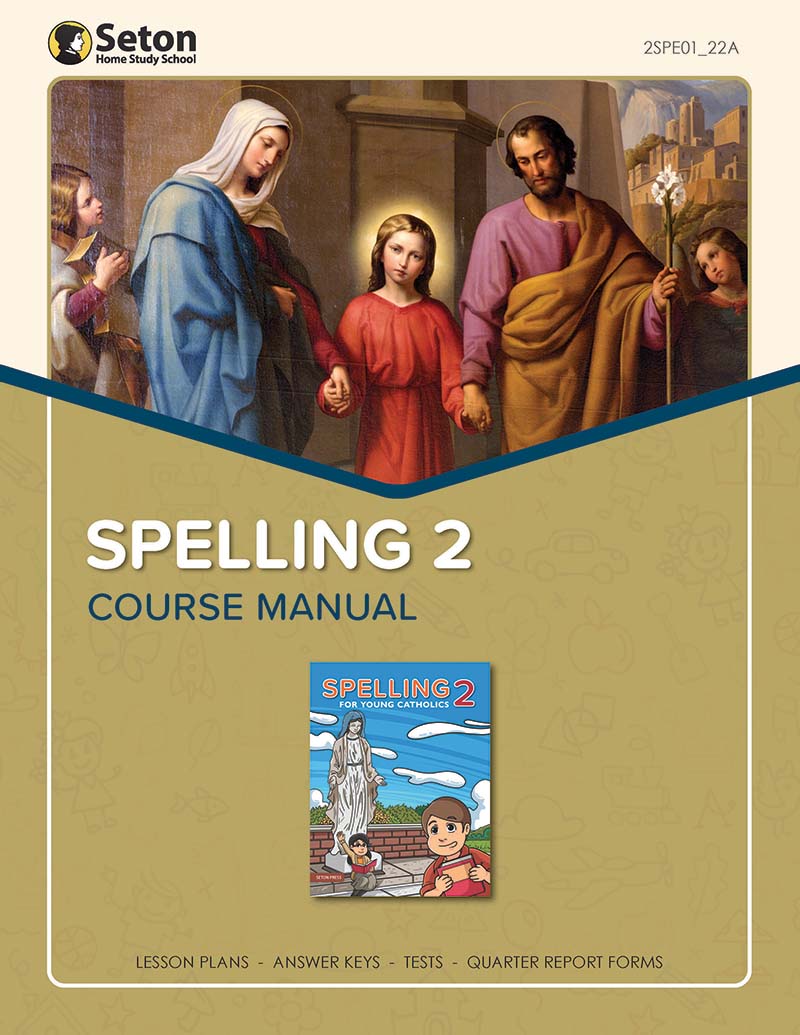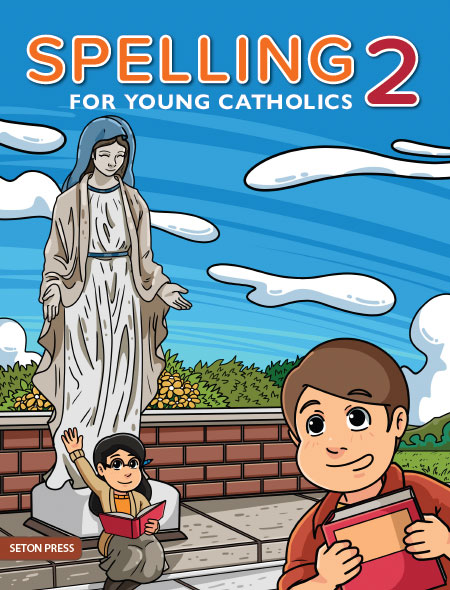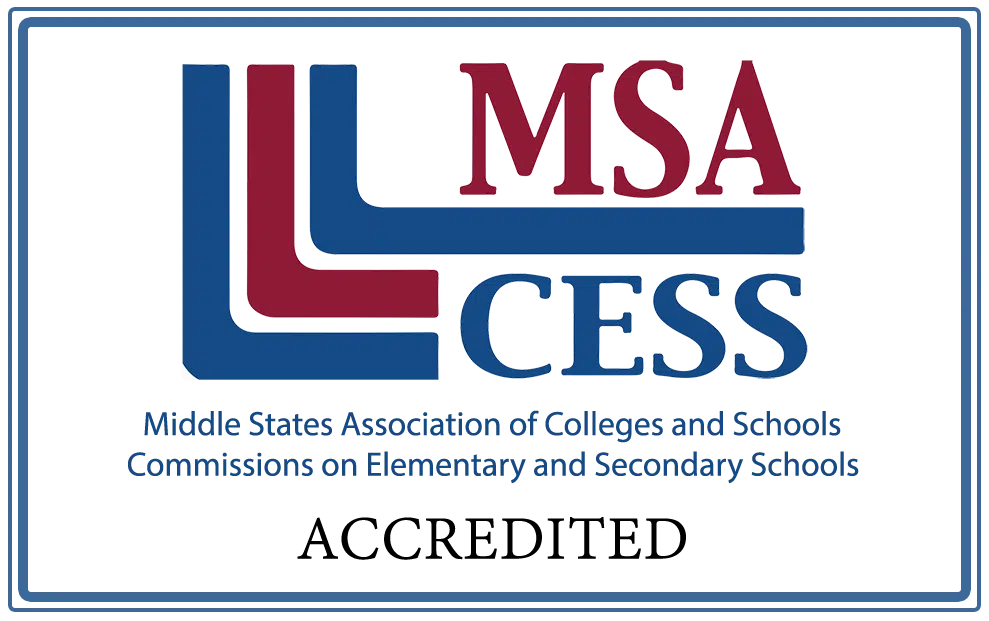Grade 2 Homeschooling Curriculum
Select a subject to preview inside each book, and see sample lesson plans.Art 2
In Art 2 for Young Catholics, children learn to draw using a step-by-step format. All forty-nine lessons use religious references to introduce a simple drawing technique.
The lesson serves as catechetical instruction as well. Children learn to draw clouds, trees, fire, insects, animals, and people.
English 2
Second graders build on the previous year’s first formal exposure to this subject. Students learn homonyms and review sentences, antonyms, synonyms, and contractions. Library skills are introduced. Students review nouns, verbs, pronouns, and adjectives, and learn a new part of speech: adverbs.
By the end of second grade, students are diagramming simple two- and three-word sentences. Writing exercises focus on story writing, book reviews, and friendly letters in English 2 for Young Catholics.
Handwriting 2
In Handwriting 2 for Young Catholics children practice using Catholic words and sentences. They begin with a review of manuscript letters and are introduced to lowercase cursive letters at midyear. Students receive detailed step-by-step descriptions on how to form each letter properly.
Included is the Seton Handwriting Tablet, 2nd Grade; Seton produced lined paper for extra penmanship practice. 1/2 inch rule, red baseline, broken midline. 8.5 x 11 inches. 48 pp.
History 2
In Passport to the World for Young Catholics, students are taken on a journey of exploration through all continents and fifteen specific countries. The book examines the physical features, animals, foods, and Church in these locations in depth.
The workbook Geography Skills 2 for Young Catholics: The World Around Us teaches students essential skills in maps, charts, and geography skills.
Math 2
Students develop their skills in arithmetic, reasoning, logical thinking, and problem solving in the Mathematics 2 for Young Catholics workbook.
Topics include four-digit place value, adding and subtracting four-digit numbers, geometry, fractions, measurement, and multiplication (through 5 X 5). Students are also introduced to division.
Music 2
Children learn 130 songs organized by liturgical season.
The We Sing and Listen songbook includes music for Advent and Christmastide, Lent and the Passion, and Easter.
Phonics 2
Second graders work with beginning, middle, and final consonants, short and long vowels, double vowels, vowel digraphs, diphthongs, compound words, prefixes, and suffixes using Phonics 2 for Young Catholics.
Reading 2
Students improve reading fluency as they read stories, poems, and non-fiction selections from the Faith and Freedom series of Catholic readers:These Are Our Neighbors, This Is Our Parish, and A Book of Sanctity. Second graders use phonetic strategies to read orally with correct pronunciation and dramatic expression.
They also demonstrate beginning skills in comprehension. Students begin book reviews this year using Saint Francis of Assisi and Good Saint Joseph. These book reviews consist of forms that the student fills out, identifying the title, author, setting, main characters, and main events of the book. Students conclude each review by giving an opinion of the book.
Religion 2
The focus for this year in Religion is preparation for Penance and First Communion. Second graders study the St. Joseph First Communion Catechism, which uses a question-and-answer format to teach them about the Creed, the Commandments, the Sacraments, and Prayer.
Religion 2 for Young Catholics and Fr. Lovasik's The Holy Rosary round out the course.
Science 2
In Science 2 for Young Catholics, students learn about the Scientific Method and then move to the Five Senses using many hands-on activities to strengthen understanding. Students will learn about digestion, circulation, bones, skin, and muscles. Health and safety, healthy eating, and household safety are also covered. This engaging text includes "Facts to Remember" and practical applications for daily living.
Spelling 2
Spelling 2 for Young Catholics contains exercises, practice pages, and a short religious paragraph which utilizes the list words.
Rhyme Time, ABC Order, and Sounds the Same exercises encourage writing the spelling words. Includes words with ch and sh; ow and oy, er, ir, ur, or. Students learn and review basic phonics and spelling rules.
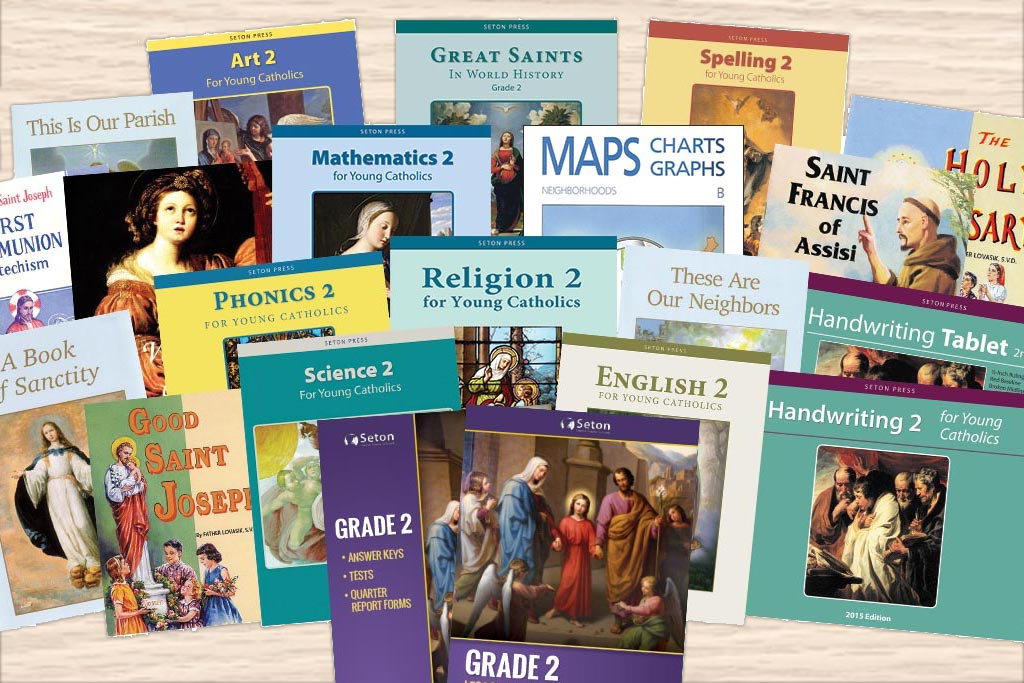
Full Enrollment
Learn More
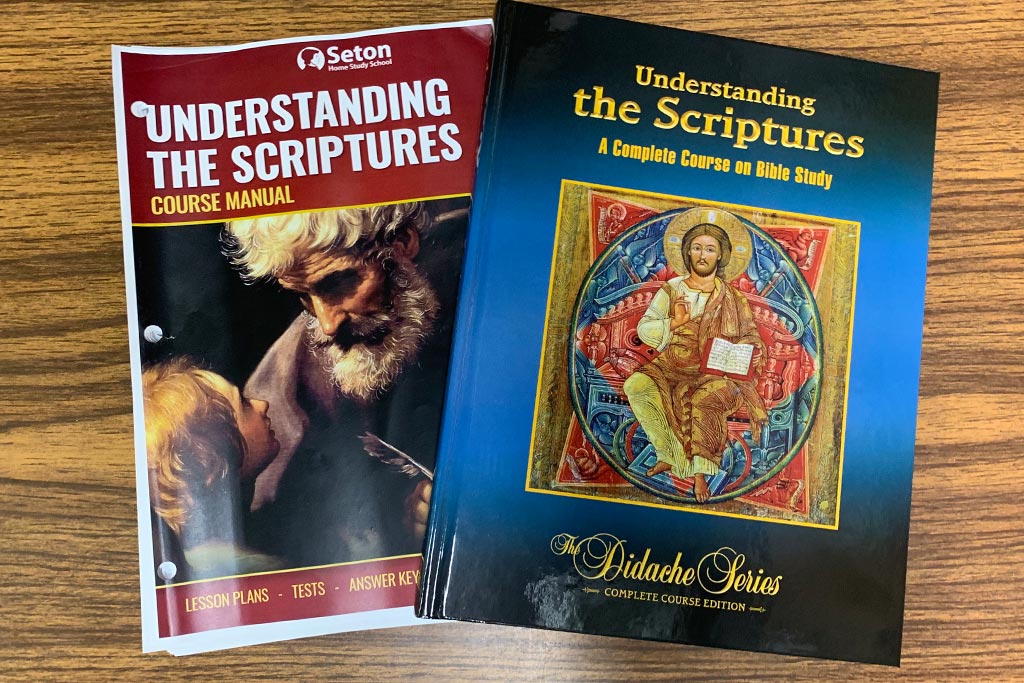
Single Course Enrollment
Learn More

Book Sales
Learn More
The Value of Your Enrollment
Your enrollment provides you with much more than just a box of books. It provides an accredited education, a strong support system, and a community of staff and homeschoolers who are in your corner. It provides access to academic and support counseling, grading and record keeping, and a solid Catholic curriculum that promotes strong Catholic values in each and every subject.
Catholic Materials
All of our books and materials are thoroughly Catholic, from beginning to end.

